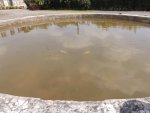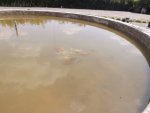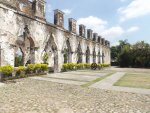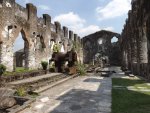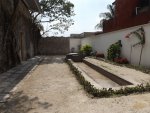- Joined
- Apr 2, 2020
- Messages
- 13
- Reaction score
- 8
- Country

In 1690 a rich Spaniard built a sugar mill here.
In the surroundings of Córdoba, dozens of haciendas, farms and sugar mills were established in colonial times, the Sotavento Coastal Plain of warm climates and high jungles, wetlands and deciduous tropical forests were always a magnet for the landowners and farmers who found here lands more than suitable for the cultivation of sugar cane, tobacco and, of course, coffee. The Córdoba region was, in fact, one of the most important sugar regions in New Spain since at least the mid-17th century.
Since this time there were around thirty sugar mills or sugar mills, in addition to almost two hundred ranches dedicated to the production of tobacco and coffee in the surroundings of Córdoba.
In Toxpan, which is the "Place of the rabbits", in 1690, the Hacienda de San Francisco Toxpan appeared in the Cordovan landscape, which was at the time one of the first sugar mills in the country and without a doubt had great
historical importance in the entity, that is, it is an icon of the region's economy between the seventeenth and nineteenth centuries.

Just a couple of kilometers from the city of Córdoba is this hacienda that in recent years has been partially and carefully renovated, among its extensive gardens its huge and heavy ashlars, its columns and Mudejar arches, its huge inhabited patios are discovered today by old machinery that were in their time the engines of the ingenuity, and further on a marvelous chacuaco on the horizon that sees everything.
The beautiful building and its wide open spaces that look out over the countryside have been refurbished in recent years to make it an attractive tourist destination and a beautiful cultural center for all Cordobans. The place is widely enjoyed just by strolling through its ancient structures, which for more than three hundred years have been witnesses of the future of Cordoba.
But guess what he had? A koi pond, no pumps, no filters, no bio balls or medium of any type. Granted, the water is not as clear as modern day ponds, but it blows my mind to think that 330 years ago a man loved koi so much that he built a pond and had koi shipped all the way overseas to Cordoba, Veracruz.
In the surroundings of Córdoba, dozens of haciendas, farms and sugar mills were established in colonial times, the Sotavento Coastal Plain of warm climates and high jungles, wetlands and deciduous tropical forests were always a magnet for the landowners and farmers who found here lands more than suitable for the cultivation of sugar cane, tobacco and, of course, coffee. The Córdoba region was, in fact, one of the most important sugar regions in New Spain since at least the mid-17th century.
Since this time there were around thirty sugar mills or sugar mills, in addition to almost two hundred ranches dedicated to the production of tobacco and coffee in the surroundings of Córdoba.
In Toxpan, which is the "Place of the rabbits", in 1690, the Hacienda de San Francisco Toxpan appeared in the Cordovan landscape, which was at the time one of the first sugar mills in the country and without a doubt had great
historical importance in the entity, that is, it is an icon of the region's economy between the seventeenth and nineteenth centuries.

Just a couple of kilometers from the city of Córdoba is this hacienda that in recent years has been partially and carefully renovated, among its extensive gardens its huge and heavy ashlars, its columns and Mudejar arches, its huge inhabited patios are discovered today by old machinery that were in their time the engines of the ingenuity, and further on a marvelous chacuaco on the horizon that sees everything.
The beautiful building and its wide open spaces that look out over the countryside have been refurbished in recent years to make it an attractive tourist destination and a beautiful cultural center for all Cordobans. The place is widely enjoyed just by strolling through its ancient structures, which for more than three hundred years have been witnesses of the future of Cordoba.
But guess what he had? A koi pond, no pumps, no filters, no bio balls or medium of any type. Granted, the water is not as clear as modern day ponds, but it blows my mind to think that 330 years ago a man loved koi so much that he built a pond and had koi shipped all the way overseas to Cordoba, Veracruz.

